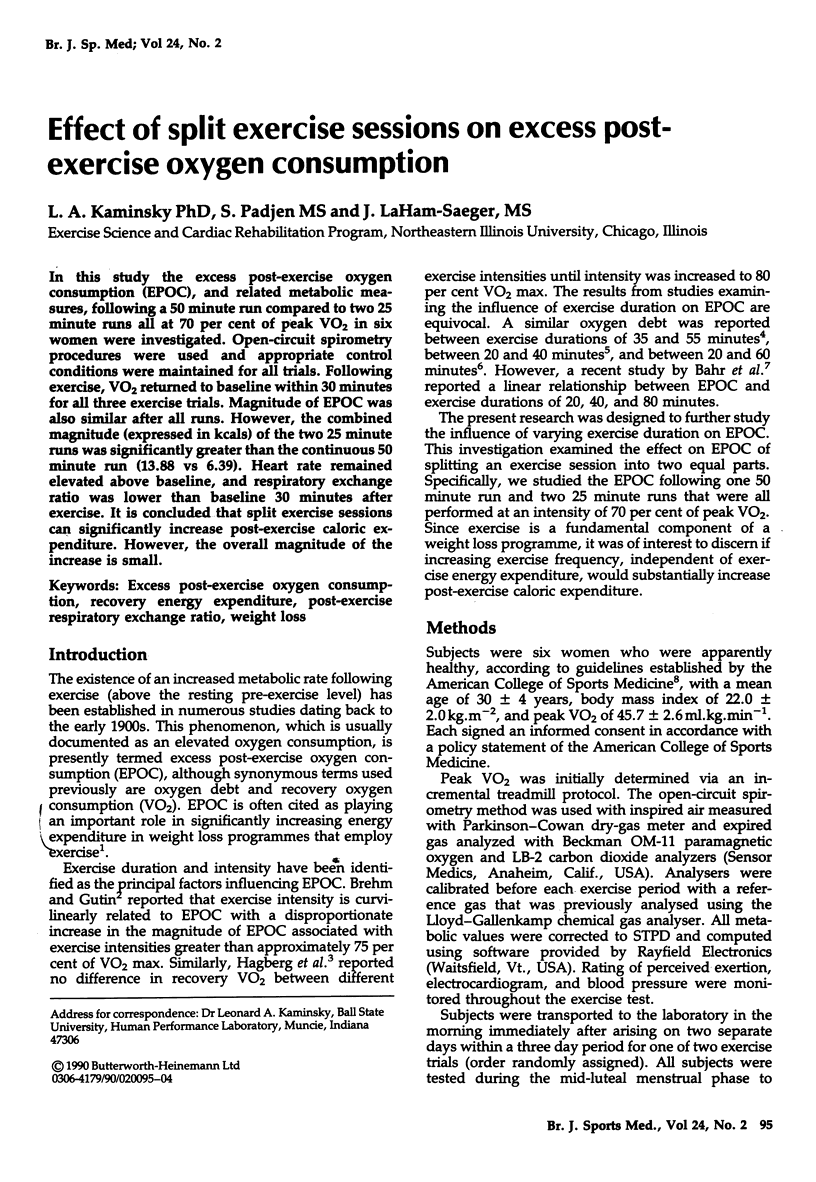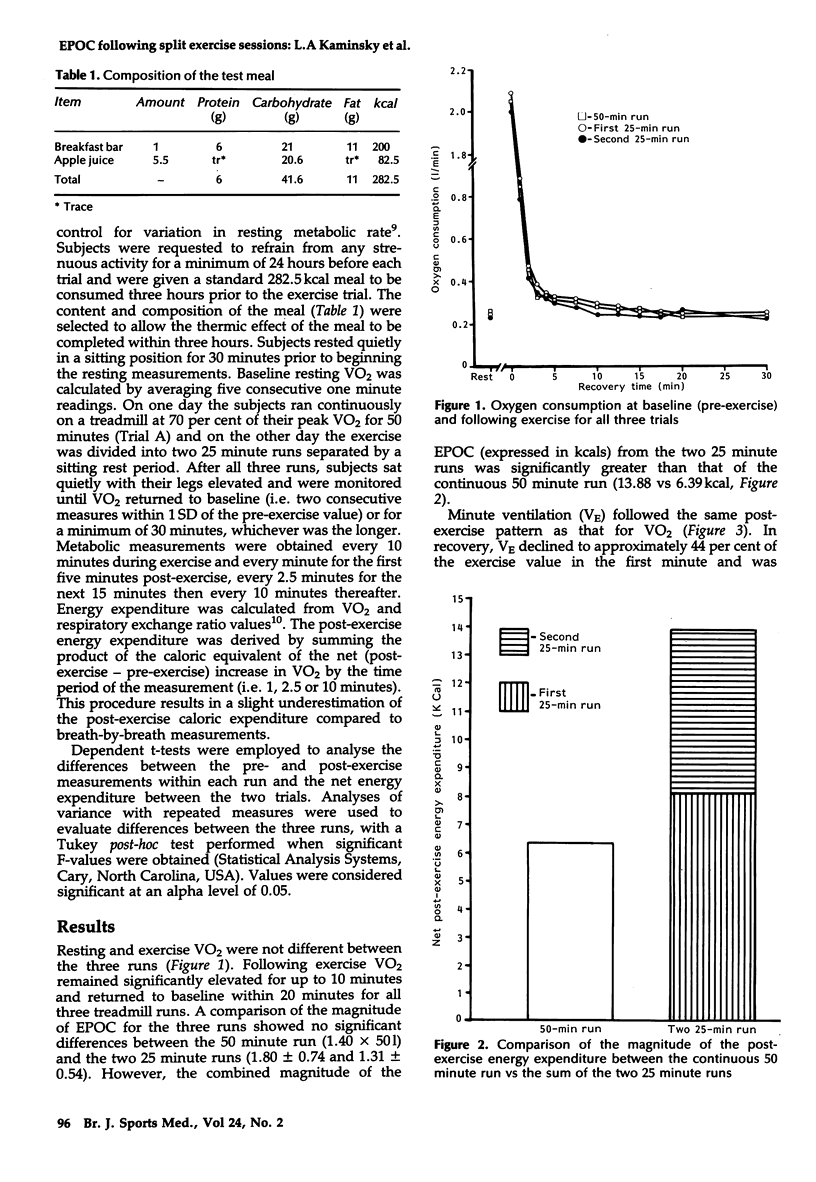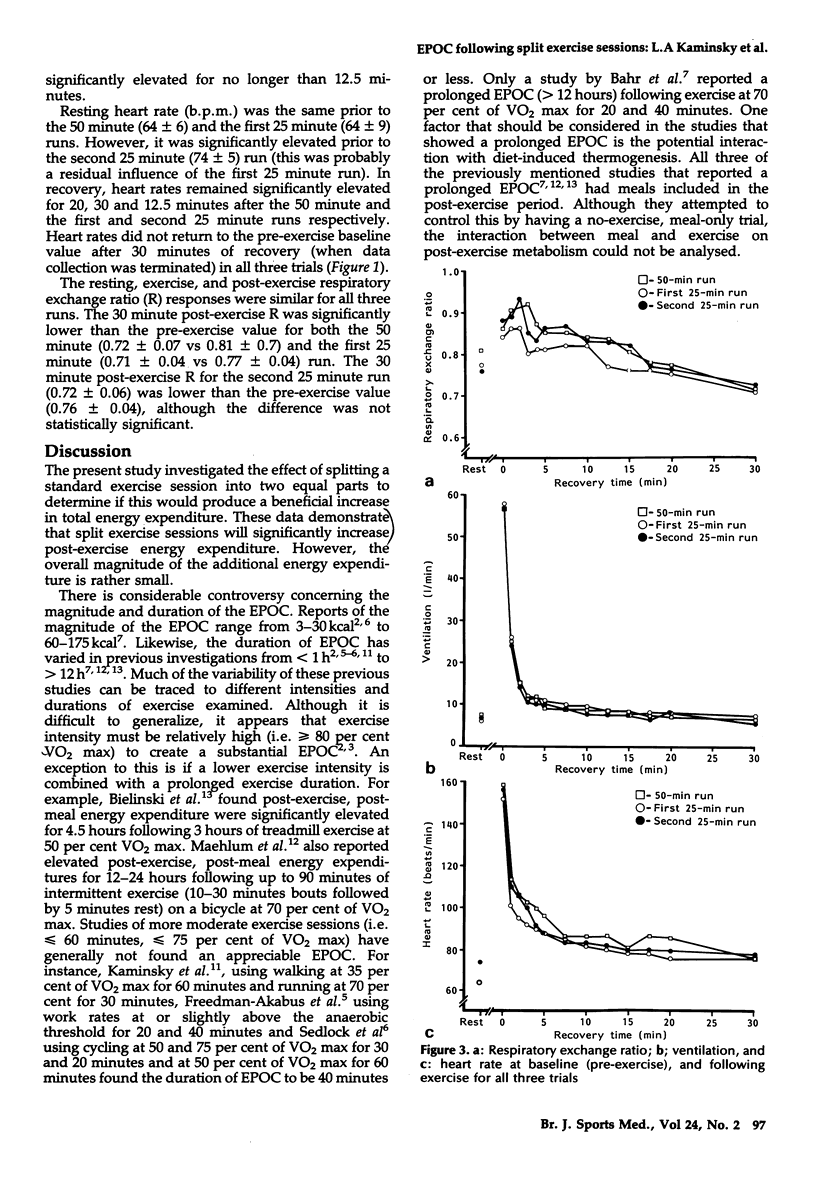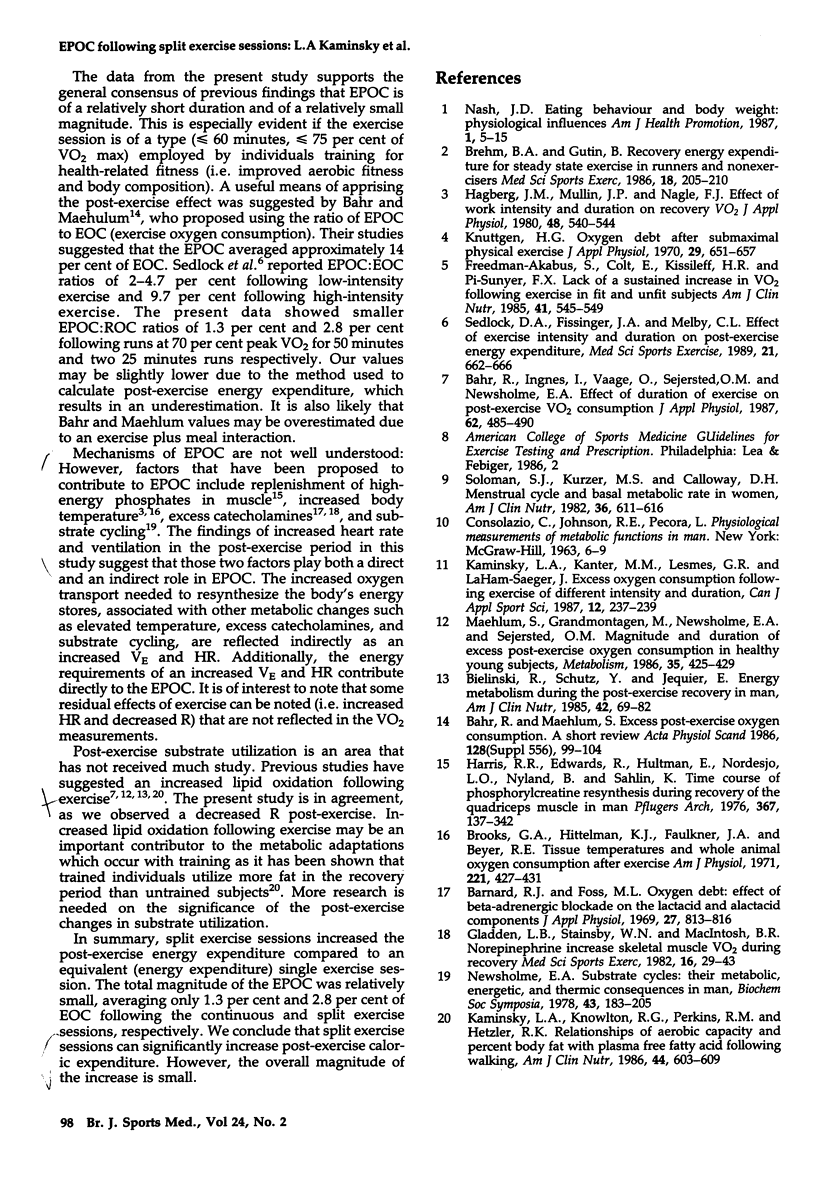Abstract
In this study the excess post-exercise oxygen consumption (EPOC), and related metabolic measures, following a 50 minute run compared to two 25 minute runs all at 70 per cent of peak VO2 in six women were investigated. Open-circuit spirometry procedures were used and appropriate control conditions were maintained for all trials. Following exercise, VO2 returned to baseline within 30 minutes for all three exercise trials. Magnitude of EPOC was also similar after all runs. However, the combined magnitude (expressed in kcals) of the two 25 minute runs was significantly greater than the continuous 50 minute run (13.88 vs 6.39). Heart rate remained elevated above baseline, and respiratory exchange ratio was lower than baseline 30 minutes after exercise. It is concluded that split exercise sessions can significantly increase post-exercise caloric expenditure. However, the overall magnitude of the increase is small.
Full text
PDF



Selected References
These references are in PubMed. This may not be the complete list of references from this article.
- Bahr R., Ingnes I., Vaage O., Sejersted O. M., Newsholme E. A. Effect of duration of exercise on excess postexercise O2 consumption. J Appl Physiol (1985) 1987 Feb;62(2):485–490. doi: 10.1152/jappl.1987.62.2.485. [DOI] [PubMed] [Google Scholar]
- Bahr R., Maehlum S. Excess post-exercise oxygen consumption. A short review. Acta Physiol Scand Suppl. 1986;556:99–104. [PubMed] [Google Scholar]
- Barnard R. J., Foss M. L. Oxygen debt: effect of beta-adrenergic blockade on the lactacid and alactacid components. J Appl Physiol. 1969 Dec;27(6):813–816. doi: 10.1152/jappl.1969.27.6.813. [DOI] [PubMed] [Google Scholar]
- Bielinski R., Schutz Y., Jéquier E. Energy metabolism during the postexercise recovery in man. Am J Clin Nutr. 1985 Jul;42(1):69–82. doi: 10.1093/ajcn/42.1.69. [DOI] [PubMed] [Google Scholar]
- Brehm B. A., Gutin B. Recovery energy expenditure for steady state exercise in runners and nonexercisers. Med Sci Sports Exerc. 1986 Apr;18(2):205–210. [PubMed] [Google Scholar]
- Brooks G. A., Hittelman K. J., Faulkner J. A., Beyer R. E. Tissue temperatures and whole-animal oxygen consumption after exercise. Am J Physiol. 1971 Aug;221(2):427–431. doi: 10.1152/ajplegacy.1971.221.2.427. [DOI] [PubMed] [Google Scholar]
- Freedman-Akabas S., Colt E., Kissileff H. R., Pi-Sunyer F. X. Lack of sustained increase in VO2 following exercise in fit and unfit subjects. Am J Clin Nutr. 1985 Mar;41(3):545–549. doi: 10.1093/ajcn/41.3.545. [DOI] [PubMed] [Google Scholar]
- Hagberg J. M., Mullin J. P., Nagle F. J. Effect of work intensity and duration on recovery O2. J Appl Physiol Respir Environ Exerc Physiol. 1980 Mar;48(3):540–544. doi: 10.1152/jappl.1980.48.3.540. [DOI] [PubMed] [Google Scholar]
- Harris R. C., Edwards R. H., Hultman E., Nordesjö L. O., Nylind B., Sahlin K. The time course of phosphorylcreatine resynthesis during recovery of the quadriceps muscle in man. Pflugers Arch. 1976 Dec 28;367(2):137–142. doi: 10.1007/BF00585149. [DOI] [PubMed] [Google Scholar]
- Kaminsky L. A., Knowlton R. G., Perkins R. M., 3rd, Hetzler R. K. Relationships of aerobic capacity and percent body fat with plasma free fatty acid following walking. Am J Clin Nutr. 1986 Nov;44(5):603–609. doi: 10.1093/ajcn/44.5.603. [DOI] [PubMed] [Google Scholar]
- Knuttgen H. G. Oxygen debt after submaximal physical exercise. J Appl Physiol. 1970 Nov;29(5):651–657. doi: 10.1152/jappl.1970.29.5.651. [DOI] [PubMed] [Google Scholar]
- Maehlum S., Grandmontagne M., Newsholme E. A., Sejersted O. M. Magnitude and duration of excess postexercise oxygen consumption in healthy young subjects. Metabolism. 1986 May;35(5):425–429. doi: 10.1016/0026-0495(86)90132-0. [DOI] [PubMed] [Google Scholar]
- Newsholme E. A. Substrate cycles: their metabolic, energetic and thermic consequences in man. Biochem Soc Symp. 1978;(43):183–205. [PubMed] [Google Scholar]
- Sedlock D. A., Fissinger J. A., Melby C. L. Effect of exercise intensity and duration on postexercise energy expenditure. Med Sci Sports Exerc. 1989 Dec;21(6):662–666. doi: 10.1249/00005768-198912000-00006. [DOI] [PubMed] [Google Scholar]
- Solomon S. J., Kurzer M. S., Calloway D. H. Menstrual cycle and basal metabolic rate in women. Am J Clin Nutr. 1982 Oct;36(4):611–616. doi: 10.1093/ajcn/36.4.611. [DOI] [PubMed] [Google Scholar]


